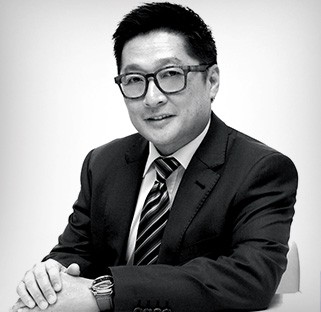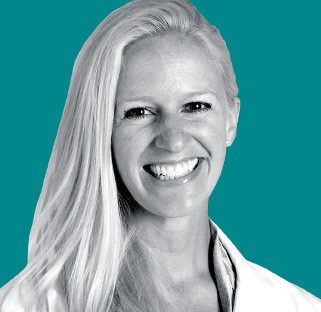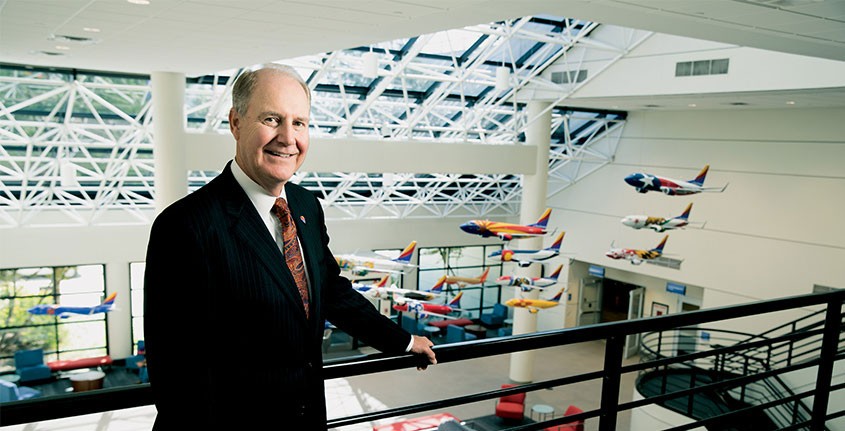- Elevating the Customer Experience
- Featured
- IQ Insigniam Quarterly® Magazine
- Transformational Leadership
Profiles in Customer Experience
The battle for customers has never been as complicated or crowded as it is today.
The ascendance of mobile and social media has created always-connected consumers. Their growing sophistication drives an expectation of a fair value exchange for data: People will share their information with companies but demand elevated experiences in return. Share on X
Corporations cannot afford to ignore this seismic shift. They must change with it, and that change must start at the top. At a growing number of organizations, the new consumer landscape has led to the adoption of a new position in the C-suite: the chief customer officer (CCO).
According to the Chief Customer Officer Council, in 2000 there were just seven CCOs worldwide. That number hit 142 in 2007, and as recently as 2014, there were 539, including a growing number of executives from Fortune 500 and Fortune 100 companies.
“The velocity of change generated by technology has created an unprecedented level of fragmentation in terms of customer choices,” says Mohamed Adam Wee Abdullah, group chief marketing officer, and group chief customer experience officer at Asian banking group CIMB Group. “With this comes increased expectation from customers in terms of service and product performance. Computing power is doubling every 18 months, but organizations are not able to double capabilities at the same rate. This has created a disparity in expectations that has contributed to performance shortfalls.”
“The velocity of change generated by technology has created an unprecedented level of fragmentation in terms of customer choices.”
For CIMB, the result has sometimes been a spotlight on weaknesses they never knew they had. “The company was inundated with customer complaints coming in through new channels created to get customer feedback,” Mr. Abdullah says. “This has caused stress in the organization as we managed the higher volumes of complaints on prevailing issues with the same number of customer service resources. It became clearer that there is an urgency to address problems at their root cause in order to improve customer experience and lower complaints volume.”
The role of the CCO (sometimes referred to as the chief experience officer) is engineered to unite organizations around a common purpose: creating a customer experience that is consistent, responsive and competitive.
“After years of saying they want to be customer-focused, CEOs and leaders are finally realizing that there needs to be someone uniting the organization around the customer,” says Jeanne Bliss, co-founder of the Customer Experience Professionals Association, president of CustomerBliss and author of Chief Customer Officer: Getting Past Lip Service to Passionate Action.
While it might be tempting to dismiss CCOs as a passing trend, those who view them as a fad instead of the future may do so at their own risk. A 2016 study by technology consultancy Avanade and customer experience management company Sitecore that surveyed 880 decision-makers in six countries found that for every dollar invested in improving the customer experience, businesses generated $3 in return.
To garner more insight into why more and more organizations are making the case (and the space) for this new chief executive role, we interviewed four CCOs from around the world about the genesis of their position and how they help organizations elevate the customer experience.

Mohamed Adam Wee Abdullah
Group chief marketing officer and group chief customer experience officer, CIMB Group, Kuala Lumpur, Malaysia
CCOs are increasingly common across North America and Europe, where companies as diverse as Allstate, Unilever, Dunkin’ Brands, Oracle, BT Group, Johnson & Johnson and News UK have embraced the role. In Asia, however, adoption has been slower.
“Most trends arrive here a little bit later than in the West because most new business concepts are introduced by consultants operating in the U.S. and Europe,” Mr. Abdullah says. “But to be fair, the role surfaced in Asia even as far back as five years ago and is on an increasing trend. I have been in this role for more than three years now. Over the past few years, I have observed more companies setting up the customer experience function, or at least using the title.”
At CIMB, which serves approximately 12 million customers via 40,000 employees, the creation of a customer experience C-suite position stemmed from the need to build a more holistic and systematic approach to addressing inefficiencies in terms of delivering toward customer expectations.
One of Mr. Abdullah’s biggest challenges as CIMB’s CCO has been breaking through silos that form in organizations and getting functional areas to collaborate to solve customer problems.
The most effective tool, according to Mr. Abdullah, has been organizing customer journey mapping workshops wherein representatives from across the business—everything from IT to human resources to operations—collaborate to diagram customers’ experiences with key products and services, like mortgage loans.
“These workshops involve identifying the emotional state the customer would be experiencing at different points across the entire delivery value chain,” he explains. “What’s good about that sort of approach is everybody can see right in front of them, from their own work, where the customer pain points are. In that sort of environment, it’s typically very easy to get consensus from all the parties involved in a particular problem to come together to work on projects to solve it.”
During one such workshop, for instance, it was learned that some of CIMB’s commercial property loans take two and a half months to get approved. To reduce that to less than one month, a more than 60 percent improvement in turnaround, CIMB embarked on a business process re-engineering project to certify employees as Lean Six Sigma Green Belts, which will help them re-engineer loan-approval processes in order to increase efficiency and reduce waste.
“There should be no ‘sacred cows,’” Mr. Abdullah says. “CCOs should not worry about displacing functions or moving out of comfort zones. Share on X If we cannot deliver a big enough change, then there is no meaning in the creation of the role in the first place.”

Adrienne Boissy, M.D.
Chief experience officer, Cleveland Clinic Health System, Cleveland, Ohio
U.S. academic medical center Cleveland Clinic has aligned itself around experience. When it appointed its first chief experience officer (CXO) in 2009, it established a guiding principle called “Patients First” that it calls its “North Star.” The premise is simple: Every conversation the organization has—and every decision it makes—is looked at first and foremost through the patient’s lens. When it purchased new hospital gowns, for instance, it considered the same cheap, uncomfortable, rear-exposing gowns that hospitals have used for eons; instead, however, it commissioned fashion designer Diane von Furstenberg to design a wraparound gown that preserved patients’ modesty.
“Another good example is parking garages,” says Dr. Boissy, who is Cleveland Clinic’s third CXO. “After Dr. Toby Cosgrove, the CEO, witnessed an elderly woman slowly making her way to the elevators through the garage filled with doctors’ cars, he rearranged all garage parking to make patient access closer to the entrances and asked doctors to park farther away. If an organization truly believes in the patient experience, then moves like that are aligning what you do and how you do it with what you value. That’s culture,” Dr. Boissy says.
That style of thinking thrives under the direction of Dr. Boissy because her department, the Office of Patient Experience, works directly with caregivers to implement the “Patients First” philosophy across silos.
“We as an organization recognize that patient experience isn’t just one office or one person. It’s universal.”
“We as an organization recognize that patient experience isn’t just one office or one person. It’s universal,” she explains, adding that each of Cleveland Clinic’s 40,000 employees received customer experience education during a half-day training session at the outset of its “Patients First” journey. “When we’re designing a brand-new patient room, we should all be thinking about how we’re going to co-create that room with patients. When we’re thinking about online scheduling, we should be thinking about what that’s going to look like for the patient. When it really comes down to it, everyone in this organization is a chief experience officer.”
One of the single biggest drivers of Dr. Boissy’s impact in the organization has been the support her C-level status has afforded.
“Many organizations have chief experience officers, but they don’t sit in the C-suite. Putting that person in the C-suite is another organizational gesture of the importance of the role,” she says. “Think about the CFO. His team works on simplifying the patient bill, for example, which can be a pain point for many patients. That’s a process he and I can dialogue about.… It drives a level of pervasiveness that wouldn’t otherwise exist if I didn’t have a seat at the table.”
Clear backing from the head of that table—the CEO—has been essential to building Dr. Boissy’s impact.
“Dr. Cosgrove created the first-ever role of chief experience officer at the Cleveland Clinic so the experience of our patients and their loved ones would be front and center for our organization,” she says. “I meet with him every month to talk about my ideas and discuss what we might do or how we’re going to shift priorities to get something done. Additionally, we have a lot of sidebar conversations about the future of patient experience. He’ll randomly walk into my office with a letter from a patient, read it to me, then say, ‘We need to share this with the organization,’ or ‘What can we do about this?’ He is thinking about how we can do better all the time. Some of those informal moments have been very powerful for me in my role, and they make it easy to see why his organization would rally around the idea of patient experience.”

Manoj Bhoola
Chief customer officer, SAP Africa, Johannesburg, South Africa
Technology has empowered customers to be not only more vocal, but also more knowledgeable, Mr. Bhoola says. “The way we sell and engage customers has changed quite drastically because the customer has done his own research and often knows more about your product than you do. To stay one step ahead of the customer, we need to move beyond selling products and understand every part of the business in a different way.” This was one of the key drivers for SAP Africa’s introduction of the CCO role, which Mr. Bhoola has held for just under a year.
Consider, for example, a salesperson attempting to sell a new solution to an existing client. “If a salesperson goes to an organization and tries to assist the customer with a specific challenge, he might not be aware that the customer is experiencing difficulty with his company in another part of the business,” Mr. Bhoola explains. “The discussion that they’re having becomes extremely diverted, and he has no idea how to respond because it’s out of his scope.”
CCOs help their organizations avoid such scenarios by building infrastructure—roads and bridges that connect segregated functions to help them solve customer problems better, faster.
“I think part of my role is really to show a lot of empathy, to understand customer needs, to understand the pain points and where the customer comes from,” Mr. Bhoola says. “But at the same time, I also understand the businesses and how they need to keep running and optimize the environment, make sure the sales are coming in. I have a very good understanding of all sides of the table, which I think is a huge key in this type of role.”
Mr. Bhoola sees a lot of potential expansion and evolution for the role.
“I think eventually we’ll start bringing in other facets,” he says. “Instead of measuring only the customer experience, I think the role will grow to measure the experience of implementation partners, resellers, distributors—every part of the company’s ecosystem.”
But at present, Mr. Bhoola sees CCOs as invaluable conduits for transmitting the customer’s perspective.
“You may be big and successful today, but when revenue goes south it goes south very quickly Share on X,” he says. “Just look at what happened to Nokia. It went from hero to zero in just a few years because it ignored the adoption of smartphones. If it had listened to its customers and gotten their feedback, it probably wouldn’t be in the situation it’s in today. You need to get in there and walk the floors of the customer.”

Jeanne Bliss
Co-founder of the Customer Experience Professionals Association and author of Chief Customer Officer: Getting Past Lip Service to Passionate Action
Jeanne Bliss is one of the original pioneers of the CCO role. She served as the first CCO at Lands’ End, Microsoft, Coldwell Banker and Allstate, and since then has seen the role take off.
“A couple things occurred that have driven the adoption and understanding of customer experience,” Ms. Bliss says. “One is the economic downturn. We’ve been through several since I’ve been doing this work, but during this last one the idea finally took hold that organic growth is the best growth strategy for a company. The second thing that happened is social media. Thanks to social media, organizations can run but they can’t hide, and when customers give feedback online it’s usually about how well or unwell the company is working to deliver a united experience.”
Having developed the CCO role in organizations around the world, Ms. Bliss is insistent about what the role is and is not.
“It’s not about waiting for customer feedback or customer results to come in and then reacting. Share on X It’s about building an engine of repeatable customer understanding,” she says. This starts with honoring and managing customers as an asset and assessing key metrics such as: Did you bring in more customers than you lost? Do you have rules and policies that prevent them from wanting to have a relationship with you? Do your rules and policies prevent your front line from being able to support them?
For revolutionary results, an organization must also align around experience. “Rethink the accountability and the work of the organization across the customer’s life instead of down your silos,” Ms. Bliss says. “Create an aspirational statement about what you want your customers to be able to achieve at each stage of their journey, then orchestrate and architect an experience to match.”
To be truly effective, Ms. Bliss says CCOs must be united with the CEO and the C-suite. “It is not about one person being given the role and people say, ‘OK, your job is the customer,’ but rather uniting this leadership team to work together. And it really must include the leadership team.”



